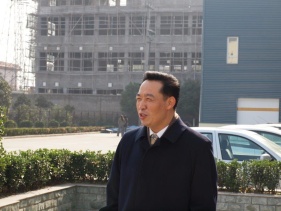The state’s involvement in launching and guiding economic reform in departures from centrally planned economies is undeniably essential, but the degree of state guidance differed markedly between the top-down big-bang approach in Eastern and Central European economies and China’s more evolutionary approach.

China’s reform leaders relied on gradual market liberalization while postponing large-scale privatization of the state-owned sector until the mid-1990s, two decades after the start of reform. An unintended consequence of reformers’ decision to institute market liberalization was the new structural autonomy that decentralized product markets provided to economic actors outside of the state-controlled economy. The expansion of decentralized markets empowered entrepreneurs to pursue opportunities for profits independent of the state’s allocation system for production factors.
In their search for pathways to grow a private manufacturing economy, swarms of entrepreneurs experimented with institutional innovations that enabled them to by-pass the state’s allocation system and secure control of upstream factor resources and downstream distribution. Neither difficulties in accessing scarce government-controlled resources, nor the absence of a legal and regulatory framework supportive of private enterprise posed an effective constraint on the rise of private manufacturing. By the time private enterprise finally received constitutional protection guaranteeing equal status with government-owned firms (2004), and implementation of China’s first Property Rights Law (2007), a substantial private sector of 5.5 million private companies with more than $1.3 trillion of registered capital already employed close to 75 million workers.

Rise of private manufacturing firms
The rise of a dynamic private manufacturing economy in China as the main driver of capitalist economic development is a case in point to exemplify the processes through which the emergence of markets provided the necessary incentives and opportunities for economic actors to decouple from the main pillars of China’s economic system: household farming in the countryside, and state-owned and collective firm manufacturing in the urban sector. First, the gradual replacement of central planning by market mechanisms shifted power from bureaucrats and central planners to producers. This implies that producers were now facing a greater set of choices, which allowed them to develop new forms of production. Through market exchange economic actors were able to informally work out new institutional arrangements for cooperation outside the boundaries of the established system of state production and allocation. Second, the rise of free markets provided incentives for institutional innovation as rewards were increasingly based on performance rather than the strength of political connections. Finally, markets endogenously expand the opportunities for entrepreneurs and firms to identify new markets and prospects for profit making.

Clearly, with factor and product markets evolving outside of the state’s allocation system, strategic interests not aligned with the structure of opportunity legitimized by the state became decoupled from formal rules mandated by the state-owned economy. This decoupling process typically followed four stages: First, shifts in market competition provide incentives for economic actors to come up with bottom-up institutional arrangements to secure gains from emergent opportunity structures. Second, entrepreneurial action generated institutional innovations, and through a process of trial and error, successful solutions diffused through the regional economy. Third, mutual monitoring and enforcement in crosscutting networks of like- minded actors reinforced novel behavioral strategies and norms. Fourth, through mimicking, swarms of followers pile in, and following tipping points, a self-reinforcing social movement dynamic evolved, which in turn facilitated local collective action to lobby for changes in the formal rules consonant with informal norms. Industry-based associations and lobbyists acted as agents representing social interests. Politicians eventually responded to bottom-up innovations by changing formal rules to accommodate and regulate emerging economic realities.

In an established economic order dominated by state-owned enterprises and banks, entrepreneurs endogenously developed economic institutions that enabled them to compete and cooperate in spite of discriminatory rules that privileged the state-owned firms. These endogenous institutions—i.e., private capital market, labor markets, industrial clusters, distribution networks, markets for innovation—enabled private enterprises to surmount barriers to market entry in China’s transition economy. In this way, despite discriminatory treatment by the state, weak property rights, and stigmatized status on the periphery of the favored state-owned firms, it was the private enterprise economy that emerged as the fastest-growing sector. By 2010, through bottom-up endogenous processes private industrial firms and family-run businesses had developed into a key economic sector employing more than 160 million people.

Informal norms, business networks and economic institutions
Avinash Dixit (2004:3) makes plain that “economic activity does not grind to a halt because government cannot or does not provide an adequate underpinning of law. Too much potential value would go unrealized; therefore groups and societies have much to gain if they create alternative institutions to provide the necessary economic governance.” Just as informal norms enable, motivate and guide economic transactions in societies with well-established legal systems, such socially sanctioned expectations arise to facilitate economic activity when economic actors cannot rely on the legal system to litigate the resolution of disputes over property rights and contracts.

The informal norms that play such a pervasive and important role in enabling and guiding private economic growth in transition economies seem to operate effectively beyond the shadow of the law. Not surprisingly, this includes both the illegitimate shadow economy controlled by criminal elements and legitimate private firms that develop into leading manufacturing and technology firms such as Alibaba.com and Geely Automobiles. As the general manager of a chemical company in Zhejiang Province noted, “There are so many problems with legal implementation. It is easier to get together a circle of friends who inform each other.”

A broad consensus across the social sciences agrees that social norms and networks are mainly effective in the governance of exchange in close-knit communities of like-minded economic actors. If the total gains from cooperation exceed the costs, private orders relying on norms and networks can provide stable institutional arrangement for economic actors to sustain repeat transactions. Entrepreneurs in China’s transition economy rely on informal norms to secure trust, acquire information, and make cooperation possible in a competitive economy. Without contract law, missing property rights protection and, in spite of discriminatory government policies, entrepreneurs founded firms and built businesses on the basis of social norms enforced through sanctions embedded in multiplex business networks. Only after the private enterprise economy was already well established as an irrepressible and powerful engine of economic growth did the state begin to enact, ex post, the formal rules and policies that cumulatively conferred legitimacy, formal legal rights, and equality to private firms.
This is consistent with the causal sequence in the rise of political and economic institutions in the West. Norms often precede laws, and only become formalized once a “norm becomes firmer” and once “there is growing support to formalize it through the promulgation of laws” (Axelrod 1986:1106). It is well known that commercial law often builds on established and widely accepted business law. Worldwide, the inception of securities markets was not usually preceded or even accompanied by formal state-mandated rules protecting shareholder rights. Good formal institutions have typically followed, rather than preceded, economic development.

The behavior of economic actors frequently bears little resemblance to the formal rules mandated by the state. Instead, the actual conduct of business and organizational practices conform to informal norms reflecting the private expectations and interests of economic actors. In departures from central planning, the actual business practices of economic actors often are at odds with the goals formulated by politicians and the existing rules of the game. Informal norms operating in the shadows of the state can both limit and sustain economic development. On the one hand, decoupling of entrepreneurial action from formal rules can give rise to inefficient allocation of resources when economic actors collude to secure resources from government for their group, resulting in structural rigidities and economic stagnation. Mafia-like business networks in Russia’s transition economy operated to obstruct reformers’ “big-bang” strategy to institute quickly a market economy. The rise of dense industrial clusters of private manufacturers in China contributed to three decades of economic growth through rapid wealth accumulation and provision of nonfarm employment.

Given the enormous variability of possible outcomes from the interaction between informal business norms and formal rules, a central problem for a theory of institutional change is to better specify the nature of the relationship. Most importantly, it is crucial to understand, under which conditions, change of informal institutions, as observed for China’s private firm economy, is likely to precede formal adjustments of state laws and regulations. In Capitalism from Below, we employ a Schelling-type frequency dependent utility model to detail the scope conditions under which informal norms successfully decouple from formal rules. Whether opposition norms reach tipping points, where a de-coupling from existing laws becomes individually rational, rests on a set of three distinct factors: First, a decoupling becomes all the more likely the smaller the expected sanctions from government and local enforcement agencies in case of defection. Second, the expected utility of defection (assuming others defect as well) needs to be larger than in case of norm compliance. Lastly, local network externalities in close-knit, geographically confined areas can speed up the diffusion of new local behavioral patterns.
Building on these factors, Della Posta, Nee and Opper (2013) develop an agent-based model showing that diffusion of opposition norms can accelerate rapidly if expected utilities, sanctions and network externalities are conducive. In fact, their model confirms that cases of endogenous institutional change, initiated by the spread of informal opposition norms, are far more widespread than state-centered theories of institutional change would predict.

It fits their model that Wenzhou municipality, a place historically neglected by state investments, was among the first to experience the rise of a private sector economy. While individuals had virtually no employment alternatives outside of the farming sector (making a decoupling from existing institutions very desirable), the local government had little incentive to sanction entrepreneurial activities due to tight fiscal constraints. Here and elsewhere, it was through the innovative activities of marginalized social actors, operating within close-knit networks, that private firm development has spread and gradually diffused in the Yangzi delta region.
Endogenous institutional change and capitalist economic development
What lessons do we draw from the emergence and development of capitalism in China? The theory of endogenous institutional change very briefly outlined here turns on mechanisms that are general. We show that entrepreneurs are the key agents driving institutional innovations that enable capitalist economic development; once established, these emergent economic institutions facilitate additional bursts of entrepreneurial action that lead to a series of tipping points in the growth of a market capitalist economy.

Within business communities, multiplex networks provide the sinews of enforceable trust and the conduits of information flow that allow for cooperation in competitive markets. Emergent social norms are effectively enforced through mechanisms as common and universal as social approval (reputation, status) and punishment (bilateral sanctions, accurate negative gossip, and community sanctions). Thus, a dynamical process starting with small numbers of marginal economic actors in peripheral locations gave rise to a social movement-like growth and diffusion of entrepreneurship across the regional economy.
In the private enterprise manufacturing economy all of the key factors required for successful entrepreneurship could be found and secured through network ties and bottom up institutional arrangements. Producers in industrial clusters benefited from a stable chain of suppliers that offered the mix of technical support and material inputs needed for flexible and adaptive production. With networks connecting producers with upstream and downstream markets, advantages of industrial clusters go well beyond specialization effects of the work process and knowledge spillovers. Equally importantly the spatial proximity in cluster locations provides fertile grounds for face-to-face interactions required to develop generally accepted business norms. Mechanisms such as personalized exchange, mutual dependence in multiplex business relations, and community sanctions provide the social glue that binds principals and agents to contracts—implicit and formal—and foster cooperative forms of conflict resolution. Without close-knit and highly specialized business communities, it is doubtful whether entrepreneurs could have developed so effectively the norms required to survive and thrive outside the state’s production system.

We detail how after the private enterprise economy was already an emergent social and economic force in China that political elites, in central and local government, then put in place the legal and regulatory structures to legitimize private enterprise as an organizational form and model of economic development. In other words, in the years after the state initiated economic reforms, bottom-up institutional innovations in the private sector initially enabled the development of a dynamic capitalist economy, and then the political elite followed up with accommodative change of formal rules legitimizing what already had taken place on the ground to enable the gains in productivity to be channeled into taxable revenue.
(to cite this text please refer to this draft)
